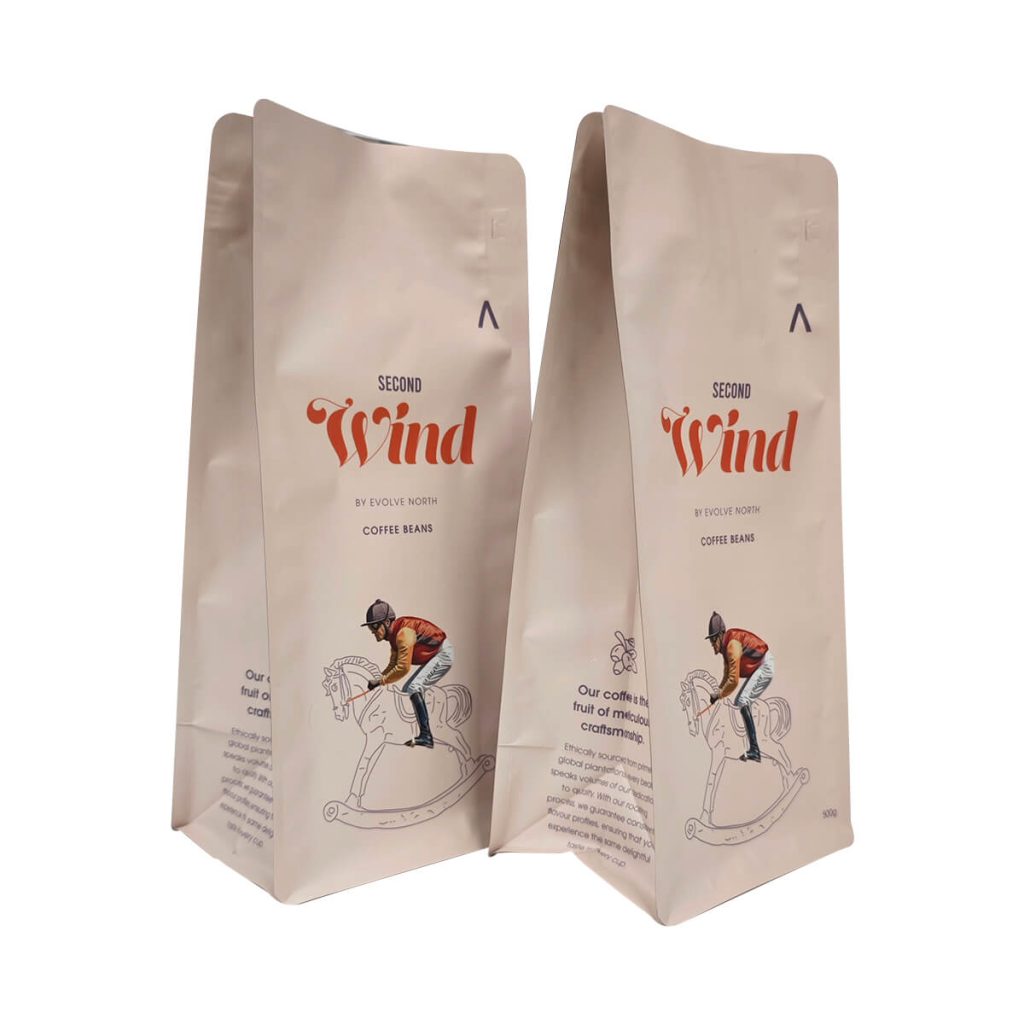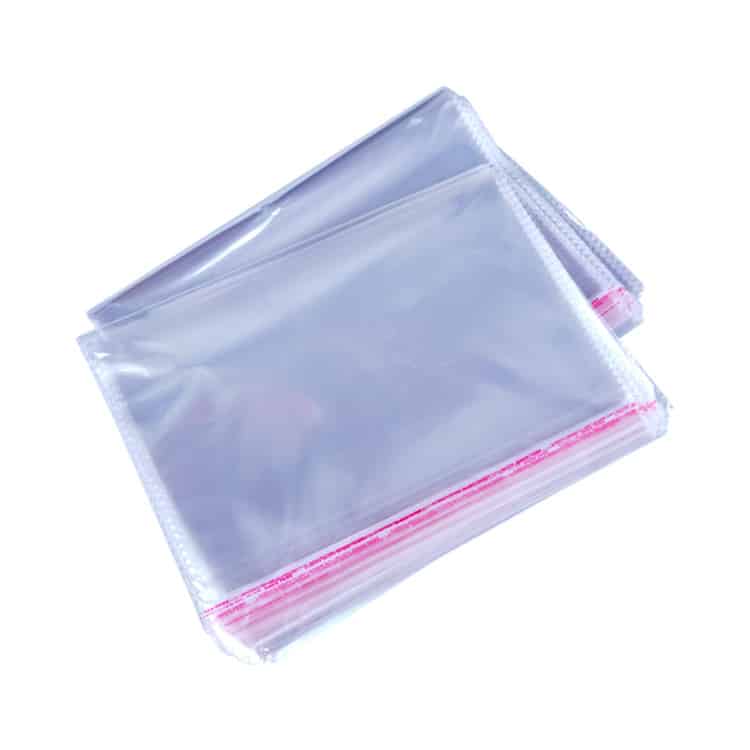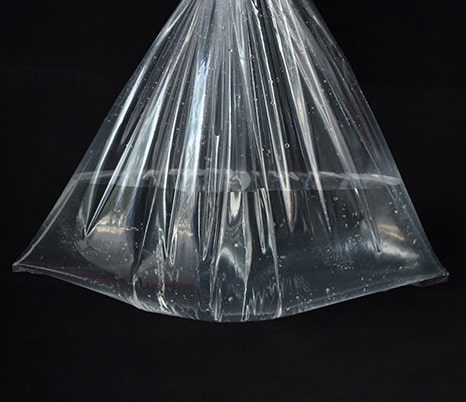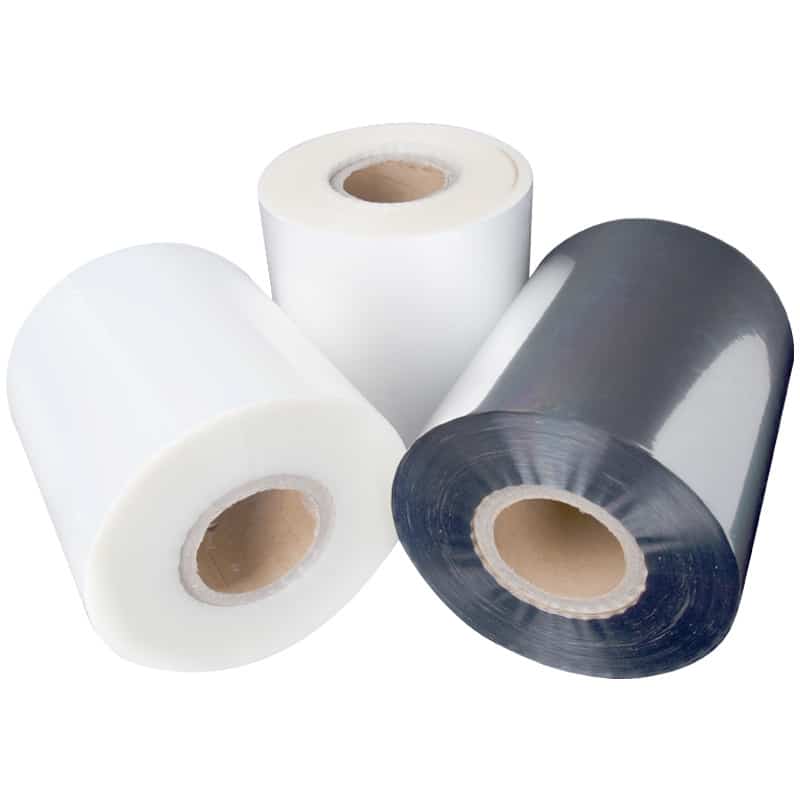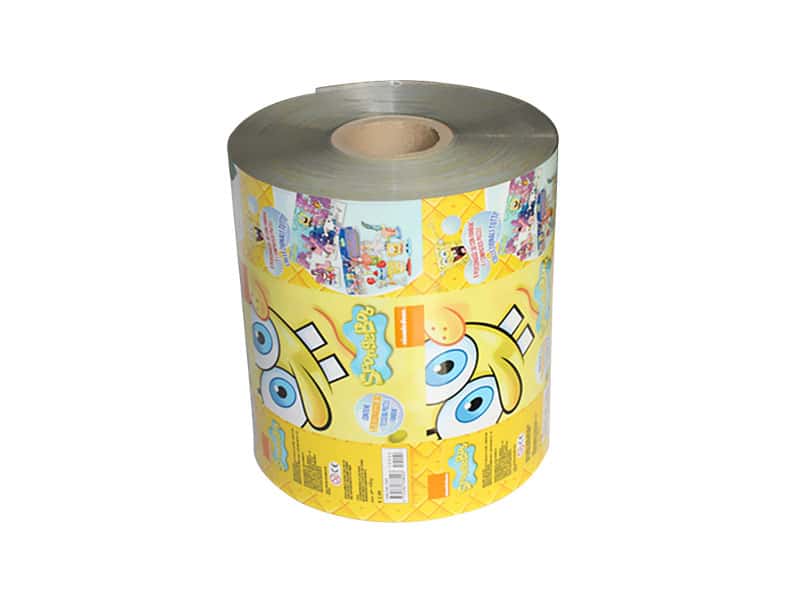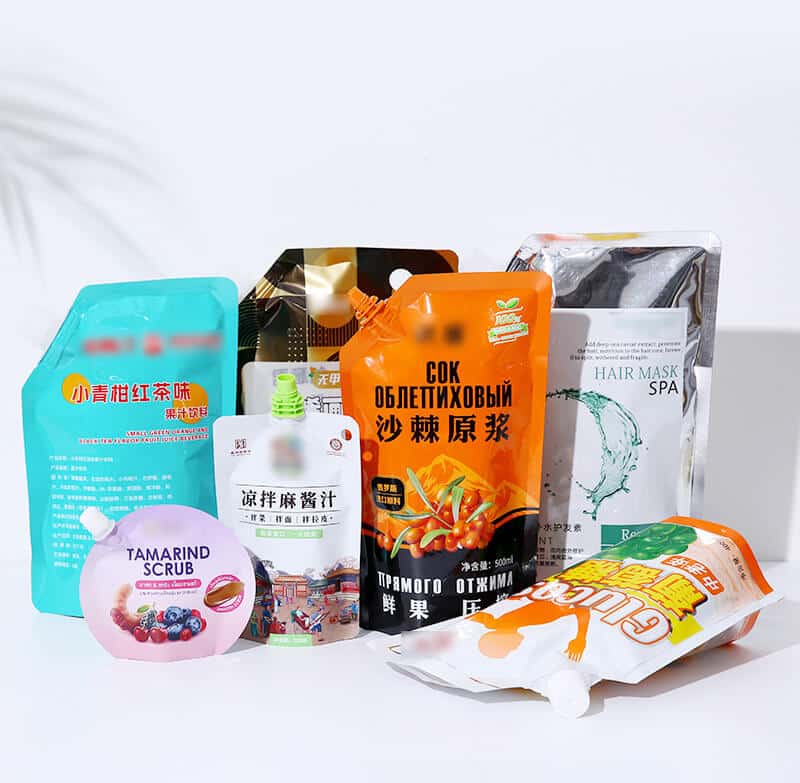Fastness of adhesion between ink and film
The adhesion fastness of the ink used for printing is the result of the interaction of the intermolecular forces between the plastic film and the ink connecting material, so the more similar the polarity of the ink connecting material and the film, the better the compatibility, and the ink selection must match the film type. The factors leading to poor adhesion are divided into plastic film and ink factors, as follows.

Plastic film factors:
- film surface of the corona treatment degree is not enough to achieve the proper tension or treatment of the substrate surface due to poor storage environment, storage time is too long, resulting in surface tension decay and failure. General requirements PP, PE surface tension ≧ 38mN / m, PET ≧ 50mN / m, NY ≧ 52mN / m. The surface tension of each batch of the film should be checked before use.
- Film in the processing of most added certain lubricants, anti-static agents, moisture-proofing agents, etc., these additives over time, the film slowly penetrate the surface, forming a weak interface layer on the surface of the film, affecting the ink adhesion. Therefore, the film should be used within the expiration date and the surface tension should be tested before use. Dainty pen test is available.
- such as PA, PVA, PT and other materials are easy to absorb moisture and reduce adhesion, such substrates should be stored under good conditions (temperature and humidity control) and fully preheated before use
Ink factors
- Ink with the wrong model, mixed with different models of ink. Gravure printing ink types are many, there are surface printing, printing ink, different materials correspond to different ink, a variety of special ink must correspond to the use, otherwise, the adhesion fastness is not enough, before production should check the operating process instructions.
- Ink deterioration, whitening so that adhesion is extremely reduced.
- Insufficient drying of ink, internal residual solvents, in addition, a certain drying temperature for some resin adhesion material to improve the adhesion is extremely beneficial.
the printing process of overprinting errors
Overprint error is a common defect in printing, in the multi-color overprinting process, each color can not completely overlap, there is inevitably a certain deviation, the main reasons are as follows:
Personnel quality
Duis aute irure dolor in reprehenderit in voluptate velit esse cillum dolore eu fugiat nulla pariatur. Excepteur sint occaecat cupidatat non proident, sunt in culpa qui officia deserunt mollit anim id est laborum.
Equipment factors
- the accuracy and performance of the entire equipment, overlay tension control, heating and air supply system, embossing rubber rollers, plate rollers, plate shafts, guide rollers and other systems to match, these circumstances determine the overlay temperature, pressure, parallelism, elongation, winding, etc., and the color register system itself is limited to its accuracy.
- The color register photoelectric device should be well maintained and operated correctly. For example, the halogen light source light is weak, should be switched to optical fiber or halogen light bulb, reflective plate and scanning head distance adjustment is correct, generally about 8mm.
- The increment of the plate roller is not suitable, easy to produce longitudinal color register inaccuracy, embossing roller rubber deformation, elasticity is not enough. To keep the pressure roller in good condition
Operation process factors:
- The substrate tension setting is not reasonable, the tension is too small, the substrate is slack, the longitudinal and horizontal color register is not allowed; the tension is too large, the substrate shrinks horizontally and the longitudinal color register is not stable, adjust the tension accordingly.
- The temperature is not suitable, especially the oven temperature is too high, the cooling roller temperature is too high to deform the film, and the preheating box temperature should be raised appropriately for the less flat film.
- Unbalanced inlet and exhaust air volume in the oven, causing the film to shake in the oven, the inlet and exhaust air volume should be measured by anemometer and controlled.
- The installation of the plate roller is not suitable, such as the production of eccentric, before the installation of the plate roller must be scrubbed clean the ink on the plug.
the scraper line marks generated by the reasons
No ink line marks and ink line marks
No ink line marks
Mainly mixed with hard inorganic impurities in the ink, such as sand, these hard particles embedded in the scraper edge and cause line marks. Sometimes these scraper line marks are also dashed, the appearance of such scraper line marks can easily damage the printing and scraper.
In general, there are the following aspects
- As for the plate roller. The roller surface finish is not good, the roller surface chrome plating layer hardness is not enough, the plate roller is too polished, no lubrication is also easy to produce.
b. Ink. Ink fineness is not enough, pigment particles are too large, ink use process mixed with granular impurities; ink dilution is not standardized, resulting in the phenomenon of solvent impact; ink antistatic performance is poor, poor lubrication performance of the ink. The use of high hardness pigment will produce lines.
c. Environmental aspects. The temperature, humidity, and cleanliness of the air in the printing workshop will also affect.
d. Squeegee aspect. A hard squeegee produces more line marks than a soft squeegee. In addition, if the squeegee line marks are not dealt with in a timely manner, a large bunch of squeegee line marks will be generated around the line marks with the back and forth swing of the squeegee.
Line marks processing method
- When loading the knife must be flat, careful, before loading the knife to check whether there is a gap in the scraper blade, after loading the knife must be carefully ground, in the printing process, if the knife wire appears, must stop and then carefully ground. Knife grinding oil mixed into the ink is strictly prohibited.
2. Knife silk caused by the plate roller generally appears in the shallow part of the network, such as the plate rough, gradual over-uniformity, the network depth is not appropriate. Generally should be processed by using metallographic sandpaper grinding plate, pay attention to the grinding plate force to be uniform, especially serious to return to the plate maker to deal with.
3. Reduce the ink viscosity, such as viscosity being too large, the layout of ink drying too fast, relatively increased the friction between the plate roller barrel and the scraper so that the scraper is difficult to scrape down the layout of ink to form a knife wire.
4. If the knife silk is caused by the ink, generally due to the ink having garbage or ink dissolved unevenly caused, should be taken to filter the ink, re-select the solvent with strong solvency or change the ink.
the problem of color differences arising from printing
Ink factors
- require a smaller amount of ink to be added to the ink tray each time to keep adding new ink frequently.
2. require the viscosity of the ink to maintain consistent from start to finish, preferably with a viscosity controller to control.
3. mixed color color points, the difference in density between organic and inorganic pigments in light ink is likely to cause failure.
Squeegee factors
Squeegee contact printing plate position, angle and pressure on the print ink color, especially the shallow sub-part of the ink has a greater impact.
Production process factors
Printing speed in the official production to try to maintain a constant. Ink must be fully stirred, ink circulation smoothly. Control the printing plate do not blow to the irregular airflow.
Blocking plate
Causes of blocking the plate
- caused by dry ink. Caused by the following factors: ink dry knot.
a. solvent and printing speed mismatch, drying too fast.
b. squeegee position and embossing point is too far, the ink in the eyes of the gravure too long exposed to the air.
c. The diameter of the printing gravure roller is too large and the immersion in the ink plate is too shallow.
d. The hot air in the drying box leaks out and blows onto the surface of the plate roller.
e. long downtime, the plate roller idle, the ink in the mesh for a long time can not be transferred, and gradually dry knot.
2. Impurities mixed into the ink caused by. The substrate often generates static electricity when running, absorbing the dust and impurities in the environment into the ink, into the mesh caused by blocking the plate.
3. Poor quality of gravure plate caused by. In the production process of the plate roller, the inner wall of the mesh rough, uneven chrome plating, grinding burrs, etc., on the ink transfer rate has an impact on the severe punishment caused by blocking the plate.
4. poor state of the ink, ink deterioration, solvent misuse, the mixing of foreign ink, etc. seriously affect the solubility of the ink, resulting in blocking the plate.
5. Chemical changes. For two-liquid reactive ink, with the poor printing, the gradual occurrence of chemical reactions such as cross-linking, so that the ink’s mobility becomes poor, viscosity increases, the transfer rate decreases, resulting in blocking.
The solution to the blockage of the plate
- the use and printing speed coordinated solvent, especially when the temperature is high, the appropriate use of slow-drying solvent.
2. within the scope of the printing quality is not affected, as far as possible to shorten the distance between the squeegee position and the embossing point.
3. maintain and check the leakage of drying hot air, or use a baffle to prevent hot air from blowing directly onto the layout.
4. to frequently stir the ink in the ink tray, so that the ink is in a flowing state, and add new ink in time to reduce the generation of ink skin.
5. If the poor quality of the inner wall of the mesh of the plate roller causes blocking, the plate should be made again.
6. before starting or just open to wipe the plate roller with solvent, printing should try to avoid long downtime, long downtime, first clean the plate roller or the plate roller immersed in ink idle, but not too long;.
7. When the ink due to temperature differences and other reasons so that its additives, wax substances precipitated, before using the ink warmed to 40 ~ 50 ℃, so that it dissolves.
8. When the ink deterioration, misuse of solvents, mixed with a different kind of ink, to replace the ink, cleaning the ink tank and circulation pump.
Adhesion (counter-stick, back-stick, hot-stick, sticky back)
The reasons for sticking
- Insufficient drying, residual solvent. Especially the printing plate is deeper and a large number of slow-drying solvent cases.
2. two-liquid reactive ink improper use, such as improper amount of curing agent, so that the ink can not be cured, can also cause adhesion.
3. Inadequate cooling of the film after printing and drying.
4. caused by too much pressure during winding.
5. Storage environment temperature is too high and film roll lying horizontally are prone to sticky ink.
6. low adhesion of ink, easy to transfer sticky ink.
7. gold ink, silver ink printing is easy to dry inadequately, resulting in sticky ink.
8. For double-sided corona treatment of materials, PT, PA and other materials with high surface tension on both sides.
Ink sticking solution
Keep the drying system in the best condition, with suitable drying temperature, air volume and air speed, and match with printing speed to fully reduce residual solvent.
2. check whether the cooling rollers are in good working condition, so that the film is fully cooled.
3. winding tension and winding pressure should be appropriate, and reduce the number of winding meters if necessary.
4. Reduce the printing speed when printing with gold and silver ink, and dry fully.
5. Use anti-adhesive additives if necessary.
static electricity failure
Static electricity phenomenon
As most of the substrate for printing paper, plastic and other insulating materials, very easy to generate static electricity and can not escape, the ink itself also carries static electricity, with the accumulation of charge, will cause a series of electrostatic failure, manifested in the following areas.
a. Static spotting phenomenon. Mainly in the printing of polyolefin film, in a large area of the pattern part of the formation of some variable shape of the pattern.
b. Static burr phenomenon. In the drawing line around the appearance of the line “whiskers”;.
c. Electrostatic rejection leakage phenomenon. Such as in some of the text around the bottom of the white ink laying rejection caused by the gap;.
d. Electrostatic dust absorption phenomenon. Absorption of dust impurities in the air, reducing the transfer rate of ink, the appearance of flower spots on the graphics;.
e. Static discharge phenomenon. Static electricity caused by serious air discharge, causing a fire, causing serious accidents.
The causes of electrostatic generation
- Abrasion start electricity. Through the high-speed printing equipment when the friction generated charge.
2. ink after a long period of operation accumulated charge, especially when using non-polar solvents.
Methods to eliminate static electricity
- control the humidity, the general relative humidity to about 65% is better.
2. Grounding. The most direct way to connect the metal body with the earth, the charge by the earth and leakage, such as the installation of carbon fiber brushes
make contact with the film and its grounding to eliminate static electricity.
3. Add the right amount of antistatic agent in the ink, add polar solvents, such as methyl ethyl ketone, isopropyl alcohol, etc..
4. appropriate to improve the viscosity of the ink, can reduce static electricity failure.
5. electrostatic eliminator – collector, commonly used in paper printing.
Comprehensive above, plastic bag printing must start from the root to maintain a good workshop environment, as far as possible to maintain a clean and hygienic color printing environment, you can install air filters and for dust content check. At the same time, the manufacturer’s printing equipment, technology should be constantly improved, the staff’s printing technology, responsibility should continue to improve, only then can ensure the high quality of the product.
Plastic flexible packaging bag printing and the required equipment operating procedures
1: Blow. Blow molding is the purchase of raw plastic pellets through the blow molding machine into plastic film, according to the different needs of blowing into different thicknesses, different widths of plastic film. Regular large manufacturers will choose high-quality or imported plastic pellets, there are unscrupulous businessmen in pursuit of profiteering, who will use untreated or untreated recycled plastic pellets that do not meet health and safety standards, or direct use! Products using this packaging bag printing raw materials, simply poison the masses, endangering society!
2: Plate making. According to the order, according to the customer’s requirements after the design of the bag printing effects, and then confirmed with the customer, and then handed over to a professional plate-maker, according to the design of the bag on the color, printing, etc. seal engraving is generally laser engraved, each color requires a separate template, the reason is that the color is required to be layered processing, generally, common bag printing is 4-5 colors mostly, the more complex the production of the relative The more complex the production, the higher the cost, generally look at the number of templates produced for price accounting! Engraved template rolls in these marked boxes, with the machine rotation printing, plate-making generally takes about 7 days. Plastic bag printing is divided into single-sided or double-sided and color distinction. For example, supermarket shopping bags, generally single-sided or double-sided one or two colors are most common, the color corresponds to a plate, but not double-sided color the same can be a common version, which is not, for example, each of the two colors on both sides will have to produce four plates. Plastic bag printing is generally gravure, using mostly copper plates, there are also offset plates. Packaging bag printing unit to install the plate and roll material, adjust the ink, you can print.
3: lamination. Food packaging bag printing, for example, more than the ferry aluminum or full aluminum, in general, we use a total of 3-4 layers of food packaging bags, each layer has its own dedicated function, from the inside to the outside are 1. PE layer for bonding 2. The middle layer is used to directly connect PE bonding with the outer pattern engraving or printing of the recipient layer. 3. The outermost layer of PET due to the middle layer to undertaking color or pattern engraving, has no Very good toughness, PET layer will be able to connect it well, making it waterproof, reinforced to improve the flexibility of dull! Different materials may deviate! The role of the multi-layer material: the sixth step, bag-making. Bag-making must ensure that the color printing packaging bag sealing good not leak, after the quality inspector inspection factory
4: heating. Will have been compounded into a large volume of material, and then is the most critical step, which can be said to be an important stage of quality shaping, after the bag printing, must be entered into the constant temperature box to Yang such a large enterprise to call the constant greenhouse, the temperature at about 43 degrees Celsius, depending on the specific master of temperature control and time to grasp the full role of the composite machine most effective words, long time high temperature, the volume of material All will stick together, short time temperature is low, these layers of materials can not be bonded or even skin, pigment overflow, pattern text content what will be wasted, the most important thing is to delay the customer production use, the product on and off the shelf! So this is also a very important top priority! In general, after the bag printing is good to be cured in this 12-36 hours to be called quasi-qualified bag printing materials! Good quality bags printed out, no odor, the texture is significantly thicker, the surface is flat, and the color is like baking paint, vivid! Listen to the sound dull, poor quality sound crisp, I believe that we can pick which are excellent packaging bag printing products through these, try it, go to the supermarket to buy something practice it!
5: Bag-making. Bag-making is the last online process for the printing of bags, according to customer demand, made into a variety of shapes you want. Like our common bag printing products are, food packaging, cat food, dog food bags, agriculture, veterinary products bags, and so on!

